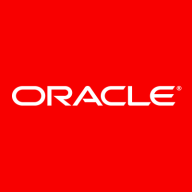

Snowflake and Oracle Big Data Appliance compete in the data management platform category. Snowflake has the upper hand due to its pricing and support satisfaction.
Features: Snowflake offers strong scalability, elasticity, and seamless data collaboration. Oracle Big Data Appliance is recognized for its extensive big data processing capabilities and deep integration with the Oracle ecosystem.
Room for Improvement: Snowflake could improve its integration with certain legacy systems and expand its multi-cloud capability. It may also enhance its data transformation features natively. Oracle Big Data Appliance could benefit from a simplified pricing model and better support for non-Oracle ecosystems. It might also improve its cloud-native functionalities.
Ease of Deployment and Customer Service: Snowflake's cloud-native architecture simplifies deployment with minimal infrastructure management. Oracle Big Data Appliance provides a robust on-premises solution but requires more initial setup effort.
Pricing and ROI: Snowflake’s pay-as-you-use pricing model often results in lower upfront costs and higher perceived ROI due to reduced maintenance. Oracle Big Data Appliance requires higher initial investment, offering significant returns only for enterprises that fully leverage its potential in complex environments.


Oracle Big Data Appliance is a flexible, high-performance, secure platform for running diverse workloads on Hadoop and NoSQL systems. With Oracle Big Data SQL, Oracle Big Data Appliance extends Oracle’s industry-leading implementation of SQL to Hadoop and NoSQL systems. By combining the newest technologies from the Hadoop ecosystem and powerful Oracle SQL capabilities together on a single pre-configured platform, Oracle Big Data Appliance is uniquely able to support rapid development of new Big Data applications and tight integration with existing relational data.
For more information on Oracle Big Data Appliance, visit Oracle.com
Snowflake is a cloud-based data warehousing solution for storing and processing data, generating reports and dashboards, and as a BI reporting source. It is used for optimizing costs and using financial data, as well as for migrating data from on-premises to the cloud. The solution is often used as a centralized data warehouse, combining data from multiple sources.
Snowflake has helped organizations improve query performance, store and process JSON and XML, consolidate multiple databases into one unified table, power company-wide dashboards, increase productivity, reduce processing time, and have easy maintenance with good technical support.
Its platform is made up of three components:
Snowflake has many valuable vital features. Some of the most useful ones include:
There are many benefits to implementing Snowflake. It helps optimize costs, reduce downtime, improve operational efficiency, and automate data replication for fast recovery, and it is built for high reliability and availability.
Below are quotes from interviews we conducted with users currently using the Snowflake solution:
Sreenivasan R., Director of Data Architecture and Engineering at Decision Minds, says, "Data sharing is a good feature. It is a majorly used feature. The elastic computing is another big feature. Separating computing and storage gives you flexibility. It doesn't require much DBA involvement because it doesn't need any performance tuning. We are not doing any performance tuning, and the entire burden of performance and SQL tuning is on Snowflake. Its usability is very good. I don't need to ramp up any user, and its onboarding is easier. You just onboard the user, and you are done with it. There are simple SQL and UI, and people are able to use this solution easily. Ease of use is a big thing in Snowflake."
A director of business operations at a logistics company mentions, "It requires no maintenance on our part. They handle all that. The speed is phenomenal. The pricing isn't really anything more than what you would be paying for a SQL server license or another tool to execute the same thing. We have zero maintenance on our side to do anything and the speed at which it performs queries and loads the data is amazing. It handles unstructured data extremely well, too. So, if the data is in a JSON array or an XML, it handles that super well."
A Solution Architect at a wholesaler/distributor comments, "The ability to share the data and the ability to scale up and down easily are the most valuable features. The concept of data sharing and data plumbing made it very easy to provide and share data. The ability to refresh your Dev or QA just by doing a clone is also valuable. It has the dynamic scale up and scale down feature. Development and deployment are much easier as compared to other platforms where you have to go through a lot of stuff. With a tool like DBT, you can do modeling and transformation within a single tool and deploy to Snowflake. It provides continuous deployment and continuous integration abilities. There is a separation of storage and compute, so you only get charged for your usage. You only pay for what you use. When we share the data downstream with business partners, we can specifically create compute for them, and we can charge back the business."
We monitor all Data Warehouse reviews to prevent fraudulent reviews and keep review quality high. We do not post reviews by company employees or direct competitors. We validate each review for authenticity via cross-reference with LinkedIn, and personal follow-up with the reviewer when necessary.